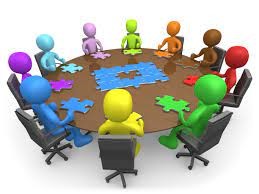- …when the affective state influence cognitive function
When we think of leaders, we often imagine lone, inspirational figures lauded for their behaviors, attributes and personal decisions, a perception that is reinforced by many people which is good anyway. But leadership is not just the fine personality, character, better name tags and slogans but quality decisions that results in better outcomes and changed results.
Decision making fundamentally remains a big part of the leader’s life and constant thinking is the nature of leadership. Decisions that leaders must make tend to carry much more than making typical everyday choices. In so many cases, the outcome will positively or negatively impact careers and livelihoods of workers, their families, the larger community and even potentially the global community in decisions by leaders of multinationals. But how do the leader know when the right decision or choice is made? Understanding the effects of leaders’ moods on decisions made is critical because leaders’ moods invariably may influence the way subordinates feel, think and act and outcomes.
We pay our leaders to do the “big thinking”, to delegate projects and focus on the big picture. What happens when our leaders become consumed in mood games? The unfortunate syndrome is when many leaders cannot fully articulate the vision for their businesses and organizations. This is often because they are not focused on defining and sharing the larger goals that should be driving their teams and organization. They are too close to day-to-day business dealings and have not stepped back and empowered their teams to think as to how to develop and implement strategies that support the goals that lead to successes and achievements. The virtually have failed in deciding which way best.
Consequently, we all realize that, our capacity to ignore information is crucial to our ability to function at all as leaders. Leaders need a sharp eye for what’s important in their roles and strong ability to process information and make choices quickly. Bad decisions are often made impulsively, failing to take in all the necessary considerations. Meanwhile, good judgement does need some understanding of options and that intellectual processing of information to making a decision go beyond biases to the evaluative stages and drawing from other inner reservoirs of character, maturity, motivations, passion and sense of mission for the better conclusion.
It is arguably opinionated that, leadership groups experience different feelings and exhibit different actions and results depending on the mood of some of the leaders. Such leaders’ moods ultimately impact decision making outcomes, the performance of the groups and the organizational expectations. As such, the effects of leaders’ moods on subordinates is as critical and important issue to consider as leaders exercise the usual mandate of decision making on a day to day basis.
Leadership Decision-making
Business managers are faced with an onslaught of decisions to make every day. Where some remain simple, others more complex and pretty mind-boggling. Operating under pressure, grappling with sets of complex choices bearing high stake consequences, sorting through often incomplete or conflicting facts and opinions to render clear enough perspectives for decisions is the daily reality for the leader which cannot be ignored.
The act of leadership decision making is about evaluating information and using it to help dismiss some actions for actions and to choose another instead. All leadership decisions are expected to align with the organization’s core values, policies, mission, vision, goals, objectives and external considerations. Decisions generate actions and recognizing this fact of nature put things in perspective. It must however be emphasized that, every comprehensive strategic innovation plan, operational system and processes, every program, activity circulating in the corporate organism is driven by the life force of the leader’s decision and these make decision making exercise a central role of leadership success or failure.
When the Affective states shape decisions by the content of thought and moods
The question is, how do our feelings and thinking as leaders influence one another? From a subjective experience and systematic behavioral research, we know that affective states profoundly influence cognitive functions, in both facilitative and antagonistic manners depending on the context. This relationship between affect and behavior is not surprising, given the extensive interactions between the physiological and interceptive manifestation of emotion and cognitive control networks.
However, the perspective for judgment and decision making which are fundamental components of leadership often require the formulation and implementation of decisions to solve social, political, economic and moral problems of all organizations. Furthermore, it has been argued that the most pressing situations requiring leader’s cognition are characterized as ill-defined and uncertain and such situations are likely to elicit emotional responses in leaders. Therefore, the efforts taken by leaders to manage their emotions are critical for ensuring that leaders improve their emotional states so to successfully address the problems at hand.
The admission that, great decisional inputs that result in excellent outcomes is aligned to the influence of the leader’s moods on the moods of individual and team members which must be positive. From the leaders’ public expressions of moods tend to influence the affect, cognition, and behavior of other group members for the impact expected. Research indicates that experienced affective states manifest themselves through facial, vocal, and postural cues. Individuals have innate abilities to express their affective states and to ascertain the affective states of others which is possible.
In furtherance of this, individuals are most likely to catch others’ moods when they attend to others’ moods and are able to read others’ moods. These propositions suggest that leaders are more likely to be transmitters of moods and subordinates are more likely to be receivers of moods. Leaders however have more opportunities to express and transmit their moods because they influence and control groups’ time, resources, and interactions. Furthermore, subordinates are more likely to attend to leaders’ moods because they depend more on the leader than vice versa. Thus, leaders and subordinates possess the attributes necessary to be transmitters and receivers of moods, respectively.
When the collective actions and inactions of leadership experience and expressions of mood set in, they send signals to subordinates and followers. Subordinates make inferences about leadership’s abilities based on the public displays of affects. It is obvious that, leaders signal their goals, intentions, and attitudes through their expressions of moods and that group members respond to those signals cognitively and behaviorally in ways that are reflected in the coordination, effort expenditure and task strategy of the group. Again, research has demonstrated that moods influence how people think and act, presumably by providing information that guides judgment and information processing. By this conclusive finding, it is imperatively critical for quality leadership’s decision to assume a certain fundamental guideline to avoid all emotionally bias and mood infested decision conclusions.
Emotion Regulation and Leadership Performance
The dynamic nature of organizations requires that leaders manage and meet multiple demands and exert influence over their followers. The high degree of complexity and uncertainty characterizing organizational environments has led to the assumption that emotion regulation is necessary for leaders to deal with negative events, establish better leader-member relations, and facilitate job performance.
An emotion management framework presents several emotion-relevant domains of leadership that require effective emotion regulation, including conflict resolution, inspirational motivation, ethical decision-making, risk taking, and feedback. In these contexts, leaders must think about what emotions are appropriate for the situation at hand and how emotions may drive behavior. Leaders need to remain calm during crises, display enthusiasm and a sense of challenge to garner follower support around a new vision, and portray disappointment when follower performance is lacking, for example.
How do Poor Leadership Decisions Happen?
Many poor leadership decisions are made due to the neglect of potential consequences, failures to pay attention to other key facts such as the failure to gather and weigh the necessary information, failing to recognize the risk in the option chosen, ignoring options that conflict with the decision maker’s views, lacking objectivity in the impact of one or more common decision biases and the prioritization deficit often showcased in determining short term gratification over greater long term benefits.
And in learning from leadership’s mistakes, failures and successes of others and in previous similar decisions, leaders deal with a variety of emotion-laden events in their day-to-day workplace activities through learning to ultimately make good business decisions that require development of skillset that must largely be acquired through real-world experience. These steps often require leaders to recognize which decisions require more thorough considerations and which can be made with less information and analysis, to take care in separating facts from opinions and consider both to the appropriate degrees, deal with more complex decisions by exercising an amount of time to gather and analyze as much relevant information as possible to use in forming a conclusion. Apparently, good decision-making requires leaders to evaluate options and make sure they understand the reasons why some are better than others, accept the need to make some decisions in circumstances where information is lacking or vague, ask for suggestions, advice and guidance or other support from experienced people and better still to clearly define the problem and the predictable effects of all decisions for the stakeholders good.
The need for Critical Thinking Skills in Leadership Decisions
Thinking is a function of all human being but critically needed for the leader in leadership decisions. It is said that, the mind is a terrible thing to waste but it is the mark of an educated mind to be able to entertain a thought without accepting it. How critical thinking capacity of the leader affects the quality of leadership and decision making is imperative and crucial.
As already posited, thinking defines us as human beings or creatures capable of mastering reason. However, it is surprising how little of this thinking we do as leaders which may be termed as “quality thinking”. Obviously, as the leaders mind ramble, he processes information through a filter of bias rooted in his personal beliefs, prejudices, aspirations and other emotional considerations. To think quality thoughts and make better decisions is to train the leaders mind to think critically.
What is critical thinking and how can it be exercised? To think critically is a self-aware method of forcing a structure up on our thoughts and emotions and imposing an intellectual standards on them. To think critically is to examine ideas, suggestions and contributions, evaluate them against what is already known and make decisions about their merit. The aim for building critical thinking capabilities of the leader is to maintain an objective position about decision making and conclusions devoid of biases.
In the context of intelligent leadership, critical thinking remains an outer-core imperative leadership competency that allows leaders to make better and independent decisions for the organizations’ good and independent decisions whiles considering the full range of solutions and options.
Again, the ability to make intelligent leaders good problem solvers from information gathered is rooted in the qualities they possess in critical thinking capabilities. Developing critical thinking skills allow for the enhancement of reasoned arguments for the task ahead, projects and examination of questions to solve.
Building Leadership Skills for Critical Thinking and Emotional Intelligence
Assumptions plays critical in the formation of all decisions and conclusions. The ability of to recognize assumptions, information received can either be subjected to further intellectual debate or assess its validity as objective or not is a key task for building the leaders critical thinking skills. The exercise affords the ability to spot logical inconsistencies, admit whether information is missing or not, assess evidence and recognize assumptions.
The leader’s ability to rigorously go through this process of thinking sharpens the leader’s critical thinking capabilities. Leaders who are capable of recognizing assumptions in ideas, plans and strategies and know how to evaluate their validity usually remain critical thinkers.
Another dimension for building the leader’s critical thinking capacity is to know how to evaluate arguments. Arguments are tools of choice for leaders who may try to convince their team and organizations about an objective, projects and plans. Typically, when the assertions of the leader are charged with emotional sentiments and often take the larger portion of judgements, outcomes and conclusions become a recipe for disaster. To objectively evaluate the validity of arguments and opinionated advices as leaders, it is important we suspend all judgements and emotionally related issues that cloud objectivity. Notably so, intelligent leadership is highly skilled at eliminating all emotional and judgement based distractions from the processes of evaluation.
Lastly, the ability of the leader to draw value-based conclusions, devoid of biases, inconsistencies and incoherent facts from information gathered from diverse sources, assess it objectively makes leadership decision better and beneficial. It is worth admitting that, the inference interpretation or deduction based on solid evidence allows leaders to make good independent decisions.
Given the considerable influence that emotions have on judgment and behavior, effectively managing emotions is key for successful leadership. Similarly, the leader’s emotional intelligence and emotion management is critical for effective leadership as leaders often need to manage their own emotions under the stressful demands of the position.
As already mentioned, emotions are a central feature of workplace experiences and the tasks and interpersonal demands faced by leaders often arise in emotion-laden contexts. Therefore, in leadership settings, leaders may need to deliberately modify their emotional experiences and expressions to exercise influence over followers through the construct of developing critical thinking features.
In conclusion however, leaders who master in critical thinking and are emotionally intelligent do not get emotionally attached to their own logical conclusions but rather seek validity and the truth. Therefore, they are capable and willing to adjust those decisions and conclusions as more information and new evidence come to light.
Frank is the CEO and Strategic Partner of AQUABEV Investment and Discovery Consulting Group. He is an Executive Director and the Lead Coach in Leadership Development and best Business Management practices for Discovery Leadership Masterclass.
Dr. Obuobi is the Lead Consultant on Cx. Leadership & SME, Country Chair, Ladies in Business
Email: [email protected] or [email protected]











